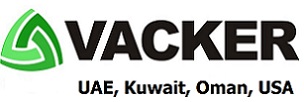
Archeology
The inter disciplinary modern subdisciplines of archeology, geo-archeology, archeo-zoology and archo-botany all use optical microscopes to detect ans secure possible tracks on found objects
 Asbestos research and removal
Asbestos research and removal
When looking through a microscope asbestos fibres can be indentified as small, elongated microscopic fibres. Knowing the negative effect of asbestos to your health it is of vital importance to detect the type of asbestos prior to any reconstruction work
 Biology (Animal & Botany)
Biology (Animal & Botany)
Today’s biology knows many subareas but the microscope is indispensable for micro biology, bacteriology, botany and zoology
 Cell culture
Cell culture
Culture cells are frequently used in diverse types of biomedical research. For this one uses an inverted microscope. For seting up the one can use a petri dish or culture dish
 Dark field microscopy
Dark field microscopy
Dark field microscopy is used to enhance the contrast in unstained and transparant specimens
 Forensics
Forensics
The modern forensic research of all kinds of organic and non-organic materials like fibers, textiles, hair but also forensic pathology frequently uses all kind of microscopes
 Fluorescence microscopy
Fluorescence microscopy
For biological and medical research fluorescence micrscopes are used to visulaize certain parts of living cells and tissues with help of fluorphores
 In vitro fertilisation of animals
In vitro fertilisation of animals
For in Vitro Fertilisation an animal (mostly horses or cattle) are insiminated. After a while the possble embryo is flushed from the uterus and implented in the surrogate mother
 Geology and Earth Sciences
Geology and Earth Sciences
Stereo microscopes and material microscopes are essential for all geologists of the specific geology areas like stratigraphics, geochronology, petrology, geochemistry and structural geology
 Goldsmith and Jewelry Art
Goldsmith and Jewelry Art
When creating jewelry and metal objects the goldsmith often uses microscopes with a large working distance in order to be able to reach the object with special tools. The quality of the optics must be high for this kind of work
 Material sciences
Material sciences
Material sciences studies materials, ceramics, polymeres, composites, semi-conductors, electronic materials, biomedical materials for artificial organs, micro-layers and nanotechnology
 Metallurgy
Metallurgy
A metallurgical microscope is used to examine the mechanisal and electrical characteristics but also the corrosion resistance of metals
 Mineralogy
Mineralogy
To study the composition and structure of minerals and rocks stereo microscopes are oftenly used
 Morphology
Morphology
The shape, structure and characteristics of bacteria and single-celled organism can only be observed by a microscope and be identified
 Pathology – Histopathologie
Pathology – Histopathologie
A pathologist studies smears, a removed mol, a removed breast or a piece of tissue which has been removed during artoscopy. To study this type of body material the pathologist uses also a microscope
 Petrology
Petrology
The microscopic petrography is one of the metheds that can be used to determine the composition of rocks. With the analysed and non-analysed method rock can be identiified
 Phase contrast microscopy
Phase contrast microscopy
Phase contract microscopes enable to observe the internal structure of cells and bacteria without colouring the specimen
 Veterinary medicine
Veterinary medicine
For veterinarians microscopic research is important to perform the right diangnosis and define the right treatment. Also for sperm collection and research of artificial insemination of animals a microscope is essential
All images and technical details are copyrighted to Euromex Microscopen BV, The Netherlands

